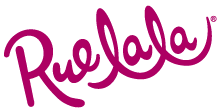Do you ever look at the numbers on plastic and wonder what they mean? What is good plastic or bad plastic? Is it ok to microwave in plastic? Are baby bottles safe? Can all plastic be recycled?
THERE ARE SO MANY QUESTIONS TO ASK, AND SO MANY QUESTIONS I WANT ANSWERED.
I have been putting this post off for two weeks now. This is a big topic to tackle and I am new to the information. While on vacation over spring break, I read an article about what the numbers on the bottom of our plastic means. I know, I know, MANY of you are already well informed, so this is for those who are like me, and kinda didn't want to know. I am trying to make changes for my family right now. I am trying to become more informed about what we eat and what we surround ourselves with.
I discussed my findings about the #'s on plastic with my kiddos, and they are now on a MISSION! We searched our entire kitchen to see what every plastic was. Then, they took it a step further...they checked the car seats, toys, every bottle you could possible think of, and have been telling everyone about our findings. I love that they are so excited to learn and be involved.
So, what are the findings? I'll give you some, but check it out yourself. There is a lot of information out there. I hope that I don't give bad info, I'm just sharing what I found. I just think it is so important for me to be more aware! Guess who had to buy new baby bottles... yup! Moi! I am just absolutely sick about the thought of my babies using a bottle that wasn't totally safe. Sick.
**I am in NO WAY any expert, nor would I ever claim to be.
**I am still researching this too and would LOVE and comments, questions, or information ya'll have to offer! So PLEASE leave comments if you have in info so that we may all learn.
**I read a lot of articles on this topic, however I found the info from Eco Village Green to be most detailed, informative and helpful.
THIS INFO COMES FROM ECO VILLAGE GREEN:
"Here’s your guide to what the numbers mean, whether they’re safe, and how easily recyclable they are:
Plastic #1: This is polyethylene terephtalate, also known as PETE or PET. Most disposable soda and water bottles are made of #1 plastic, and it’s usually clear. This plastic is considered generally safe. However, it is known to have a porous surface that allows bacteria and flavor to accumulate, so it is best not to keep reusing these bottles as makeshift containers. This plastic is picked up by most curbside recycling programs.
Plastic #2: This is high density polyethylene, or HDPE. Most milk jugs, detergent bottles, juice bottles, butter tubs, and toiletries bottles are made of this. It is usually opaque. This plastic is considered safe and has low risk of leaching. It is also picked up by most recycling programs.
Plastic #3: This is polyvinyl chloride, or PVC. It is used to make food wrap, bottles for cooking oil, and plumbing pipes. PVC is a tough plastic but it is not considered safe to cook food near it. There are phthalates in this material–softening chemicals that interfere with hormonal development. You should minimize use of #3 plastic around food as much as possible. Never cook using food wrap, especially in a microwave oven. If the wrap is listed as microwave-safe then I would still not let it touch the food while using it in the microwave. #3 plastic is rarely accepted by recycling programs.
Plastic #4: This is low density polyethylene (LDPE). It is used to make grocery bags, some food wraps, squeezable bottles, and bread bags. This plastic is considered safe, but is unfortunately not often accepted by curbside recycling programs.
Plastic #5: this is polypropylene. Yogurt cups and similar wide-necked containers are often made from it, as well as water bottles with a cloudy finish. You’ll also find it in medicine bottles, ketchup and syrup bottles, and straws. This plastic is also considered safe, and is increasingly being accepted by curbside recycling programs.
Plastic #6: this is polystyrene, or Styrofoam, from which disposable containers and packaging are made. You’ll also find it in disposable plates and cups. Evidence is increasingly suggesting that this type of plastic leaches potentially toxic chemicals, especially when heated. I suggest avoiding the use of #6 plastic as much as possible. It is difficult to recycle and most recycling programs won’t accept it.
Plastic #7: This number basically means “everything else.” It’s a mixed bag, composed of plastics which were invented after 1987. Polycarbonate falls into this category, including the dreaded BPA. So do modern plastics used in anything from iPods to computer cases. It also includes some baby bottles and food storage containers which resist staining. Use of #7 plastic is at your own risk, since you don’t know what could be in it. You should dispose of any food or drink related product, especially for children, that is known to contain BPA. I personally also view any other food or drink container made from #7 plastic with a good deal of suspicion. It is difficult to recycle #7 plastic and most curbside recycling programs won’t accept it.
To summarize, plastics #2, #4 and #5 are generally considered safe. Plastic #1 is safe too but should not be re-used due to the risk of growing bacteria. Any other plastic should be used with extreme caution, especially around food or drink. The risk is even greater when heating food. For microwaving in particular, remember that microwave safe containers aren’t necessarily healthy. They just won’t melt. In general, it’s better to avoid microwaving plastic entirely and stick to glass."
For more information on what numbers are safe go to Eco Village Green.
May we all find ways to live healthier and happier!























Hmm - I am, at this very moment, eating oatmeal I heated in a styrofoam cup. *Gulp* Thanks for the info - I tend to stick my fingers in my ears and go LA LA LA I'M NOT LISTENING when people start talking about this, but I guess it's time for me to wake up, huh?
ReplyDeletevery good to know! I keep hearing things and wondering about my cups, bowls, etc. I guess I better go through everything. Thanks for the info :)
ReplyDeleteAwesome break down! I tweeted this article.
ReplyDeleteWe switched to glass only in the micro a while back as well as only certain plastics for the freezer. I'd like to eventually ditch all the plastic, but that's harder than I thought.
~melody~
Thanks for breaking this down! I will definitely be paying more attention to what I buy, what I re-use, what I microwave, and what I avoid.
ReplyDeletethere is a creative re-use center in south florida that takes the yogart containers. i believe they send them to terracycle and receive a small payment.
ReplyDeleteterracycle makes procducts from the recycled materials. they take some cookie and chip wrappers as well as ziplock bags and butter tubs. they even take the plastic that my toilet paper comes wrapped in!
i've included their link below, for more info on what they recycle and where you can take it locally.
www.trash2treasurefl.org
http://www.terracycle.net/